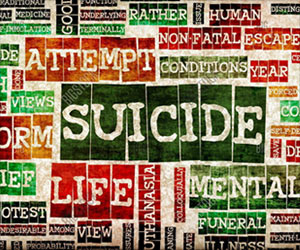Digital self-harm is a cause for rising suicide attempts among youth. Identifying the root causes for self-harming behavior and offering emotional support can save lives.
- Digital self-harm a rising trend among youth
- Posting, sending or sharing of hurtful or embarrassing content about oneself anonymously online through digital social media platforms more likely to increase suicide attempts among youth
- Parents, caregivers, educators and other stakeholders must go an extra mile to help digital self-harmers understand the root causes for self-harming behavior and offer positive emotional and mental support
Read More..
What is Digital Self-Harm?
Digital self-harm is defined as the online posting, sending or sharing of hurtful content about oneself anonymously. Since research is clear that traditional forms of self-harm (cutting, burning, hitting oneself) is linked to suicidal ideation and attempts, it stands to reason that youth who post cruel, embarrassing or threatening content about themselves (while their peers assume a third-party is the culprit) do so for similar dysphoric or abnormal reasons.Relation Between Digital Self-Harm and Suicide
Given this research question, a study by Florida Atlantic University, in collaboration with the University of Wisconsin-Eau Claire and Florida International University, is the first to empirically demonstrate an association between digital self-harm and suicidality. Findings serve as a warning sign that youth who engage in digital self-harm may also be engaging in or at risk for suicidal thoughts and behaviors.Results of the study, published in the journal Child and Adolescent Mental Health, showed that approximately 9 percent of adolescents reported that they had anonymously posted something online about themselves that was mean, while about 5 percent said they had anonymously cyberbullied themselves. With regard to suicidality, about 8 percent of adolescents reported that they had thought seriously about attempting suicide in the past year while 5.3 percent said they had attempted suicide during that time period.
Most pertinent is the finding that those engaged in digital self-harm were between five and seven times more likely to have considered suicide and between nine and 15 times more likely to have attempted to end their life.
There were no significant differences across gender and race, but non-heterosexual students were significantly more likely than heterosexual students to have seriously thought about attempting suicide (24.4 percent versus 6.9 percent) and to have attempted suicide (10 percent versus 4.9 percent). Twelve-year-old’s were more likely to have thought about attempting suicide compared with other ages, but there was no difference across age for suicide attempts.
“We have identified a strong association between digital self-harm and suicidality,” said Sameer Hinduja, Ph.D., co-author, professor, FAU School of Criminology and Criminal Justice within the College of Social Work and Criminal Justice, co-director of the Cyberbullying Research Center, and a faculty associate at the Berkman Klein Center at Harvard University.
How to Prevent Digital Self-Harm Among Adolescents?
“As such, it’s imperative for health professionals to screen for digital self-harm to address underlying mental health problems among youth that may occur prior to or alongside suicidality. Moreover, parents and caregivers must convey to children that they are available to dialog, support, and assist with the root issues that may eventually manifest as digital self-harm.Educators and other stakeholders must better prioritize the emotional and psychological needs of youth with opportunities for open dialog, skill building, and the provision of interactive and easily accessible online and offline support resources to ensure that those at-risk know that other people care about them.”
For the study, Hinduja and co-authors Justin W. Patchin, Ph.D., Department of Political Science, University of Wisconsin-Eau Claire, and Ryan C. Meldrum, Ph.D., Department of Criminology and Criminal Justice, Florida International University, surveyed a large national sample of 12- to 17-year-old middle and high school students in the U.S. to assess whether engagement in two different indicators of digital self-harm was associated with suicidal thoughts and attempts within the past year.
“It is clear that those youth who participate in digital self-harm are much more likely to think about or attempt suicide when compared to peers who do not engage in digital self-harm,” said Hinduja. “When considering the marked rise in sadness and hopelessness among U.S. adolescents over the last 10 years, our findings serve as another indicator that reflects a worsening state of mental health among teens.”
Reference:
- Digital self-harm and suicidality among adolescents - (https://doi.org/10.1111/camh.12574)
Source-Eurekalert













